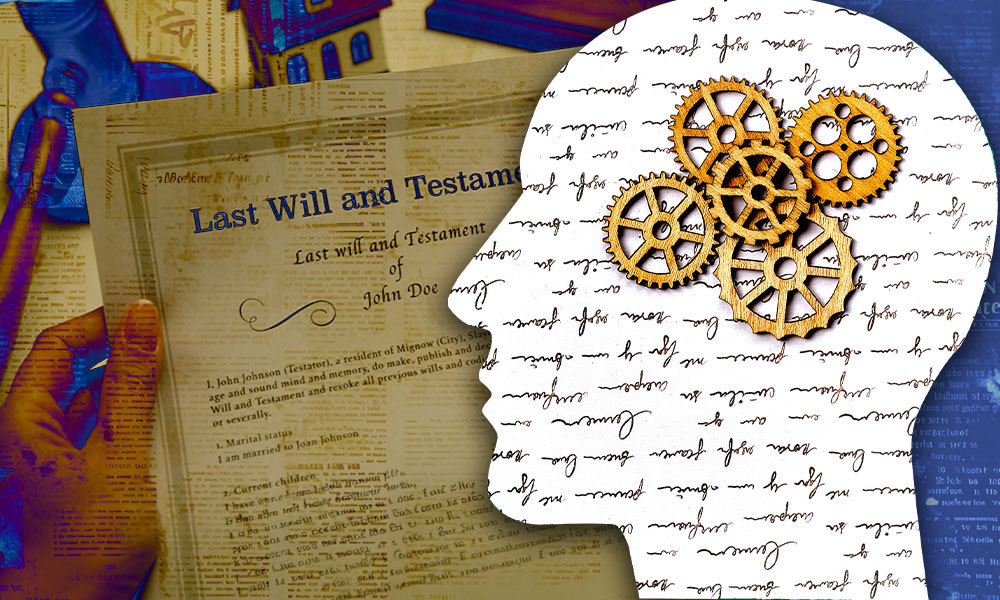A codicil is a legal instrument that allows individuals to make amendments or additions to their last will and testament without completely rewriting the entire document. It serves as a convenient tool for updating specific provisions of a will, ensuring that the testator's wishes are accurately reflected even after the initial will has been established. Codicils are especially beneficial when minor changes need to be made, such as adjusting bequests or appointing an additional executor.
Codicils offer flexibility in modifying an existing estate plan without the need for drafting an entirely new last will and testament. For instance, if an individual wants to add or remove a beneficiary from their will, they can accomplish this through a codicil rather than undertaking the cumbersome process of creating an entirely new document.
This convenience allows for efficient updates to be made in response to changing circumstances or evolving relationships. Creating a codicil involves adhering to certain formalities prescribed by law to ensure its validity.
These formalities typically include signing and dating the document in front of witnesses who are not themselves beneficiaries or heirs under the original will. The witnesses must also sign the codicil, acknowledging its execution and confirming their presence during the testator's signature.
These requirements ensure that the codicil is legally binding and enforceable. A codicil is an invaluable tool for making updates and adjustments within an existing estate plan without having to rewrite a last will and testament entirely.
Its convenience lies in its ability to allow modifications while adhering to prescribed legal formalities, ensuring that any changes made accurately reflect the testator's wishes. By using a codicil, individuals can maintain control over their estate plan by easily incorporating changes as needed throughout their lifetime.
Why create a codicil?

Life is ever-changing, and circumstances may arise that necessitate alterations in your estate plan.
Creating a codicil allows you to modify certain bequests or provisions within your will without discarding the entire structure of your original testament. Another reason for considering a codicil is the matter of convenience.
Rather than undertaking the arduous task of rewriting an entire will, which may involve significant time and effort, a codicil provides a streamlined solution for making desired amendments. This can be particularly helpful when minor changes are needed or when only one specific provision requires adjustment.
By opting for a codicil, you can easily incorporate these modifications while still maintaining the overall integrity of your estate plan. Furthermore, creating a codicil allows you to address changes in beneficiaries or appoint an alternative executor if necessary.
For example, if one of your named heirs has passed away or if you have had an addition to your family, such as the birth of a grandchild you wish to include as a beneficiary, utilizing a codicil ensures that these updates are properly documented within your will. Similarly, should circumstances change regarding the person originally designated as executor or if they are no longer able or willing to fulfill their duties, creating a codicil enables you to designate another individual who is better suited for this role.
Whether it's modifying specific provisions or addressing changes in beneficiaries or executors, a codicil provides a convenient and practical option for ensuring that your estate plan reflects your current wishes. However, it is crucial to consider the potential risks associated with using a codicil, which will be discussed in the subsequent section.
How do I create a codicil?
When it comes to creating a codicil, it is essential to understand the formalities involved.
To create a valid codicil, you must ensure that it complies with the same legal requirements as a will. This includes being of sound mind, signing the document in front of witnesses and having those witnesses sign it as well.
Before proceeding with drafting a codicil, take time to review your existing will and identify the specific changes or additions you wish to make. This could involve altering bequests or designating new beneficiaries for certain assets.

It is important to be clear and specific in your language, stating exactly what modifications you want to make and how they should be implemented within your estate plan. Once you have determined the changes you want in your codicil, consult with an attorney who specializes in estate planning for guidance and assistance in preparing the document.
While it is possible to write a codicil on your own, seeking professional advice can help ensure that all necessary legal requirements are met and minimize the risk of errors or challenges down the line. Your attorney can also provide valuable insights into potential consequences or complications that may arise from specific modifications.
It is crucial not to overlook any potential unintended consequences when making amendments through a codicil. In some cases, creating a new will instead of using a codicil may provide more comprehensive protection for your assets and heirs if significant changes need to be made.
By following these guidelines and seeking professional advice when needed, you can navigate the process of creating a codicil with confidence. Remember that ensuring the validity and clarity of your codicil is essential to guaranteeing that your final wishes are properly executed, providing peace of mind for both you and your loved ones.
What are the risks of using a codicil?
Using a codicil to make changes to a last will and testament may seem like a convenient option, but it is important to understand the potential risks involved. While codicils can be useful in certain situations, there are several factors that individuals should consider before using them.
One significant risk of using a codicil is the possibility of creating confusion and ambiguity within the document. Since codicils are separate documents that modify an existing will, it can become challenging for the executor or beneficiaries to interpret the testator's true intentions.
This confusion may lead to disputes among heirs and result in costly litigation, which can ultimately deplete the estate. Updating a will through a codicil also increases the chances of conflicting instructions or unintended consequences that could undermine the validity of one's estate plan.
Another risk associated with codicils is their vulnerability to being lost or misplaced. While formalities must be followed when executing any legal document, including codicils, their smaller size and detachment from the original will make them more susceptible to getting lost or separated over time.

If a codicil cannot be located after someone's passing, it may be deemed invalid or disregarded altogether, leaving intended heirs without their rightful bequests. Furthermore, relying on multiple codicils over time increases the complexity of administering an estate.
As circumstances change and additional modifications are needed, keeping track of each amendment becomes more burdensome for executors and can lead to errors in distributing assets as intended by the testator. It is essential to ensure that updates to an estate plan are clear and comprehensive from both legal and practical perspectives.
In light of these risks associated with using a codicil, individuals should carefully consider whether creating an entirely new will might be a more preferable option. Drafting a new will allows individuals to revise their entire estate plan comprehensively rather than making piecemeal changes through multiple amendments.
This approach minimizes potential confusion among beneficiaries, reduces the risk of lost or misplaced documents, and ensures that all relevant updates are incorporated into a single, cohesive testamentary instrument. While codicils may offer convenience for making specific changes to a last will and testament, individuals should be aware of the potential risks involved.
The possibility of confusion, ambiguity, loss or misplacement of documents and increased complexity in administering an estate are important factors to consider. Therefore, before using a codicil to update one's estate plan, it is advisable to weigh these risks against the benefits and carefully decide whether creating a new will might be a more prudent course of action.
When is creating a new will better than creating a codicil?
While a codicil can be convenient for making minor changes to an existing will, there are instances where a new will is the preferable choice. One such situation arises when significant modifications need to be made to the estate plan.
Creating a new will may be advisable when there are numerous changes or updates required in the distribution of assets. For example, if you wish to add or remove beneficiaries or modify their respective shares, it may be more efficient and clear to draft an entirely new will.
By doing so, you can avoid any confusion or potential disputes that may arise due to amendments made through multiple codicils. This approach ensures that your intentions are accurately captured and reduces the risk of errors that could undermine your estate plan.
Additionally, if you have already made several codicils over time, creating a new will can simplify matters. As more codicils are added, it becomes increasingly difficult for the executor and beneficiaries to navigate through various documents and understand your final wishes.
Consolidating all changes into one comprehensive document not only streamlines the process but also provides clarity and ease in interpreting your intentions. Another circumstance where drafting a new will is often recommended is when there has been a change in personal circumstances such as getting married or divorced, having children or acquiring significant assets.
These life events often necessitate revisiting your estate plan holistically rather than piecemeal through multiple amendments with codicils. A fresh testamentary document reflects an updated reflection of your current circumstances and ensures that all relevant provisions align with your present needs and desires.
While codicils serve their purpose in making minor adjustments to an existing last will and testament with relative convenience, there are situations where creating a new will should be preferred over using codicils. When substantial modifications need to be made, consolidating changes into a new will offers greater clarity and reduces the potential for confusion or disputes.
Furthermore, significant life events often warrant a comprehensive reassessment and modification of the entire estate plan. By considering these factors, you can make an informed decision about whether a codicil or a new will is the appropriate choice for updating your testamentary intentions.
Conclusion
Understanding a codicil is essential for anyone seeking to make amendments to their last will and testament with ease and efficiency. A codicil provides a convenient method to update specific provisions of an existing will without necessitating an entirely new document. By following the proper formalities and ensuring legal compliance, individuals can utilize a codicil as a valuable tool in their estate plan.
It is crucial to weigh the risks associated with using a codicil against the benefits it offers. While creating a new will may be more appropriate in certain cases, such as when making significant changes or adding multiple beneficiaries, a codicil can still serve as an effective option for small updates or adjustments.
Properly executed, it allows testators to maintain control over their assets and determine how they are distributed among heirs. Furthermore, it is important to work closely with an experienced executor or attorney when creating and executing a codicil.
Their guidance ensures that all legal requirements are met and that the document accurately reflects the testator's intentions. By doing so, individuals can avoid potential challenges or disputes regarding the interpretation of bequests and safeguard their estate's distribution according to their wishes.
In essence, while the decision between creating a new will versus utilizing a codicil may depend on individual circumstances, understanding how this tool functions empowers individuals to make informed choices about their estate plan. By staying proactive in regularly reviewing and updating one's last will and testament through appropriate means like a codicil when necessary, individuals can ensure that their final wishes are respected while providing peace of mind for themselves and their beneficiaries.



